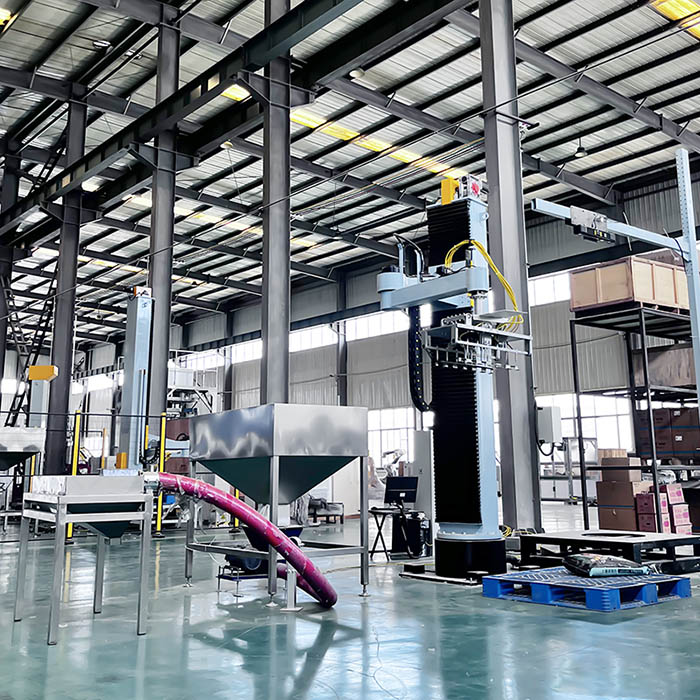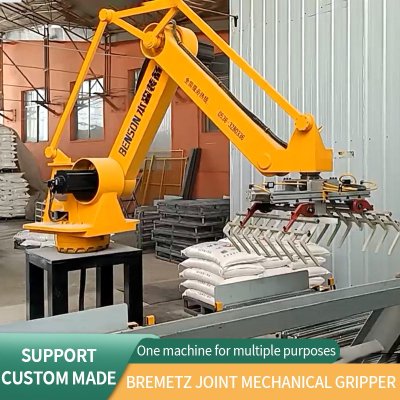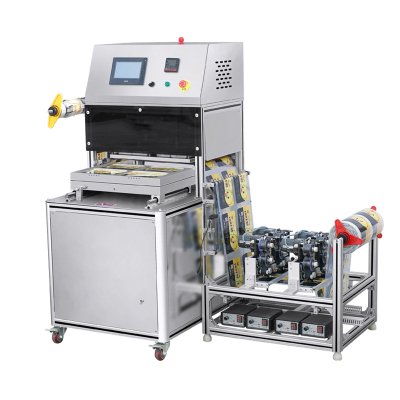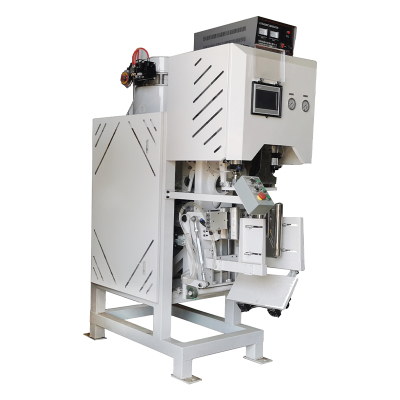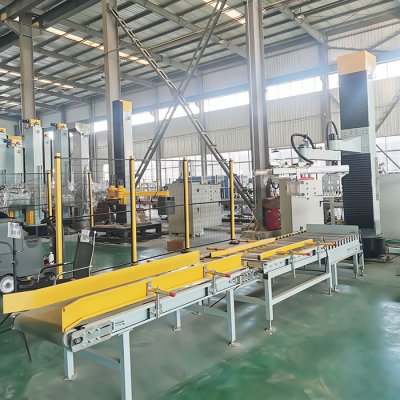bag depalletizer
The bagging and feeding machine (also known as automatic bagging machine and unloading machine) produced by bremetz is a kind of equipment used for automatically disassembling bagged materials and feeding. It is widely used in industries that need to handle powdered, granular and blocky materials. The following are its main applicable industries:
1. Chemical industry
Application scenario: processing chemical raw materials (such as resins, pigments, additives, catalysts, etc.).
2. Food industry
Application scenario: disassembling bagged raw materials such as flour, sugar, salt, milk powder, food additives, etc.
3. Pharmaceutical industry
Application scenario: feeding of pharmaceutical raw materials and auxiliary materials (such as starch and medicinal powder).
4. Building materials industry
Application scenario: automatic feeding of materials such as cement, gypsum powder, quartz sand, ceramic powder, etc.
5. Plastic and rubber industry
Application scenarios: plastic granules, rubber granules, recycled materials unpacking and feeding.
6. New energy industry
Application scenarios: lithium battery positive and negative electrode materials (such as lithium carbonate, graphite), photovoltaic silicon powder, etc.
7. Metallurgy and mining
Application scenarios: ore powder, metal powder, refractory materials, etc.
8. Agriculture and feed industry
Application scenarios: disassembly of bagged materials such as feed raw materials, fertilizers, and grains.
9. Environmental protection and renewable resources
Application scenarios: recycling and processing of waste plastics, waste paper, recycled granules and other materials.
Core advantages
Automation: replace manual unpacking and improve efficiency.
Adaptation for special needs
Explosion-proof type: Suitable for flammable and explosive materials (such as aluminum powder, coal powder).
Aseptic type: Special for the pharmaceutical and food industries, made of stainless steel and easy to clean.
The bagging feeder (also known as the automatic bagging machine or unloading machine) is a device used to automatically disassemble and feed bagged materials. It is widely used in industries that need to handle powdered, granular, and blocky materials. The following are its main applicable industries:
1. Chemical industry
Application scenario: Processing chemical raw materials (such as resins, pigments, additives, catalysts, etc.).
Advantages: Avoid manual contact with toxic, corrosive or flammable and explosive materials to improve safety.
2. Food industry
Application scenario: Disassembling bagged raw materials such as flour, sugar, salt, milk powder, and food additives.
Advantages: Meet food hygiene standards and reduce pollution risks.
3. Pharmaceutical industry
>Application scenario: Feeding of pharmaceutical raw materials and auxiliary materials (such as starch and medicinal powder).
Advantages: Aseptic operation, avoid cross contamination, and meet GMP requirements.
4. Building materials industry
Application scenario: Automatic feeding of materials such as cement, gypsum powder, quartz sand, and ceramic powder.
Advantages: Handle high-dust materials and improve the working environment.
5. Plastic and rubber industry
Application scenarios: plastic granules, rubber granules, recycled materials unpacking and feeding.
Advantages: improve production efficiency and reduce raw material waste.
6. New energy industry
Application scenarios: lithium battery positive and negative electrode materials (such as lithium carbonate, graphite), photovoltaic silicon powder, etc.
Advantages: accurate feeding to avoid dust explosion risks.
7. Metallurgy and mining
Application scenarios: ore powder, metal powder, refractory materials, etc.
Advantages: handling heavy weight packaging (such as ton bags) and reducing labor intensity.
8. Agriculture and feed industry
Application scenarios: disassembly of bagged materials such as feed raw materials, fertilizers, and grains.
Advantages: automatic feeding and reduced manual handling.
9. Environmental protection and renewable resources
Application scenarios: recycling and processing of waste plastics, waste paper, recycled particles and other materials.
Advantages: adapt to complex packaging (such as woven bags and paper bags).
Core advantages
Automation: replace manual unpacking and improve efficiency.
Safety: Enclosed design, dustproof and explosion-proof (explosion-proof models are optional).
Environmental protection: Equipped with dust removal system to reduce dust pollution.
Flexibility: Can be adapted to a variety of packaging (small bags, ton bags, space bags, etc.).
In modern logistics and manufacturing scenarios, the efficient execution of Material Handling is inseparable from the support of automation technology. Taking Robotic Depalletizing as an example, by combining the 3D Vision Guidance system, the robot can accurately identify Pallet Pattern Detection and dynamically plan Path Planning. Even in the face of complex working conditions such as Random Bin Picking or Mixed-SKU Handling, it can stably complete the Unpacking/Unloading task. This process not only optimizes the efficiency of Packaging Handling, but also significantly reduces the need for manual intervention, becoming one of the core links of smart factories.
Adaptation for special needs
Explosion-proof type: Suitable for flammable and explosive materials (such as aluminum powder, coal powder).
Aseptic type: Special for the pharmaceutical and food industries, made of stainless steel and easy to clean.
Corrosion-resistant type: Strong acid and alkali material processing in the chemical industry.
The selection of the bag splitter feeder needs to be customized according to the material characteristics (particle size, fluidity, corrosiveness), production capacity requirements and industry standards.

